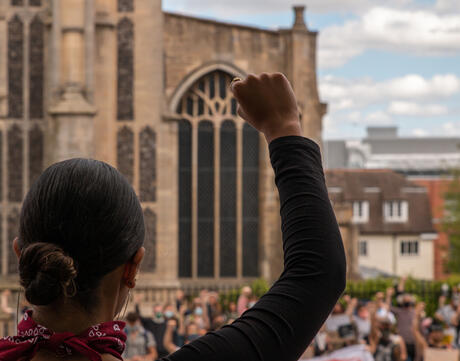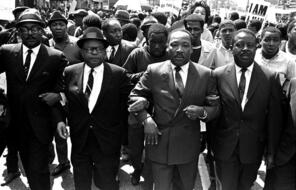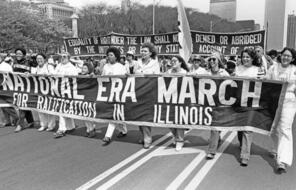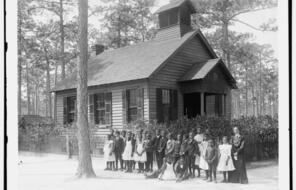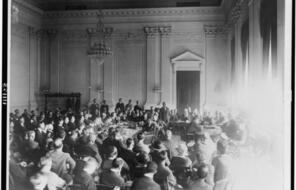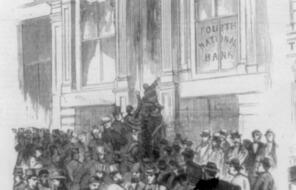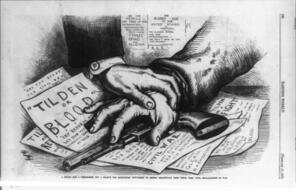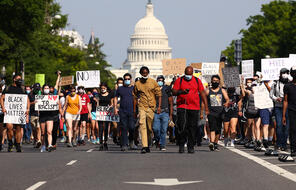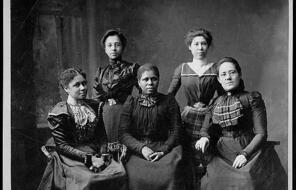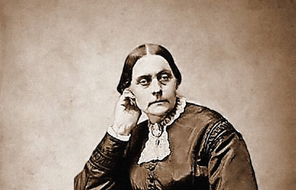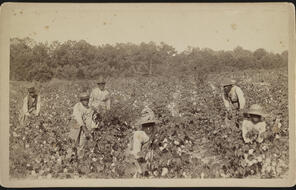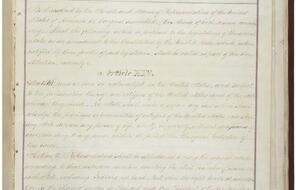Explain to your students that one of the impacts of the George Floyd and Black Lives Matter protests in the UK is that the appropriateness of having statues which celebrate people from Britain’s colonial past has been called into question. This is not the first time that this has happened: In 2015, the Rhodes Must Fall campaign, which began at the University of Cape Town in South Africa, shook the University of Oxford. In a series of protests, students demanded that the university recognise Cecil Rhodes’ colonial legacy and remove his statue as part of an effort to combat racial discrimination and acknowledge the UK’s past. Their campaign was not successful, the statue remained and the Rhodes Must Fall movement lost momentum.
The George Floyd and Black Lives Matter protests, however, have reignited the statue debate once more. The event which triggered this resurgence was the pulling down of the statue of Edward Colston in Bristol by protesters on Sunday 7 June 2020. (The statue was toppled by ropes before being rolled into the harbour.) Colston was a Member of Parliament in the eighteenth century and one of Bristol’s best-known philanthropists, who donated money to schools, churches, poorhouses, and hospitals. Colston, however, was also a slave trader, who made at least some of his fortune through the trade which kidnapped people from their homes in Africa, took them across the Atlantic against their will, and condemned them to a life of slavery on the sugar plantations of the West Indies (if they survived the Middle Passage). He, like many other influential and rich figures in Britain’s past, profited from the exploitation and suffering of other human beings.
The toppling of Colston’s statue has led to councils and institutions across the UK assessing the statues on the streets or in/on their buildings, and deciding what should be done about them. Some councils and institutions have even started removing statues that glorify figures who gained wealth and status through oppression.
Show students the following videos concerning the toppling of the statue of Edward Colston and statues that have links to slavery:
Then, discuss the following questions:
- Why do statues exist? Whose voices do statues represent?
- How did the protestors feel about the toppling of Edward Colston’s statue? Why did they feel this way?
- What sorts of messages do you think a statue can send to those who see it? Why is this the case?
- What do you think should happen to Britain’s statues that have links with its colonial past? Why? If they are to be removed, how do you think this should be done?
- What impact do you think that the UK’s colonial past has had on race equality/inequality in the UK today? Explain your answer.
Next, explain to your students that not everyone has been in support of the toppling of Edward Colston’s statue. Priti Patel, the Home Secretary, called the toppling of the statue ‘utterly disgraceful;’
Boris Johnson, the Prime Minister, referred to the demonstrations as being ‘subverted by acts of thuggery;’
and Keir Starmer, the leader of Labour, stated that it was ‘completely wrong to pull a statue down like that’ but that it should have gone ‘a long long time ago.’
There has also been a backlash around the UK from people concerning the decision to remove more statues: many argue that removing Britain’s statues is akin to erasing history.
Show students the The Independent/LBC News video Keir Starmer says 'completely wrong' to tear Colston statue down but it should have gone 'long ago.'
Then, discuss the following questions:
- Why do you think some people have taken issue with the removal of Colston’s statue and the method that was used to remove it? What do you think about how the statue was removed? Explain your answer.
- On Thursday 11 June 2020, the statue of Jamaican born actor and poet Alfred Fagon was vandalised with bleach in Bristol, in what some people believe is a response to the removal of Edward Colston’s status.
- Why do you think someone might choose to vandalise this honorary statue, which also happens to be the first statue of a black person in Bristol?
- How does pouring bleach on the statue of Alfred Fagon compare to the toppling of Edward Colston’s statue?
- Does this incident change your view on what you think needs to happen to statues linked to Britain’s colonial past or how they should be removed? Why? Or why not?
Finally, show students the video Black Lives Matter: Should these statues be taken down? from Sky News.
Then, ask them to complete the following questions and activities:
- Does watching this video change your view on what you think needs to happen to statues linked to Britain’s colonial past? Why? Or why not?
- Create a two-columned table. In one column, write down reasons people might give about why statues linking to Britain’s colonial past should be removed; in the other, write down reasons why such statues should not be removed. For both, it is worth considering how the statues might be engaged with were they to be removed or left where they are. How, for example, might the people learn more about the statues and their history?
- Finish the following sentence, summarising your opinions:
I believe that Britain’s statues linked to the colonial past should/should not be removed because . . .
- What has reflecting on the statues taught you about structural racism in the UK? What do you think needs to be done going forwards?
